The Myth of Manual
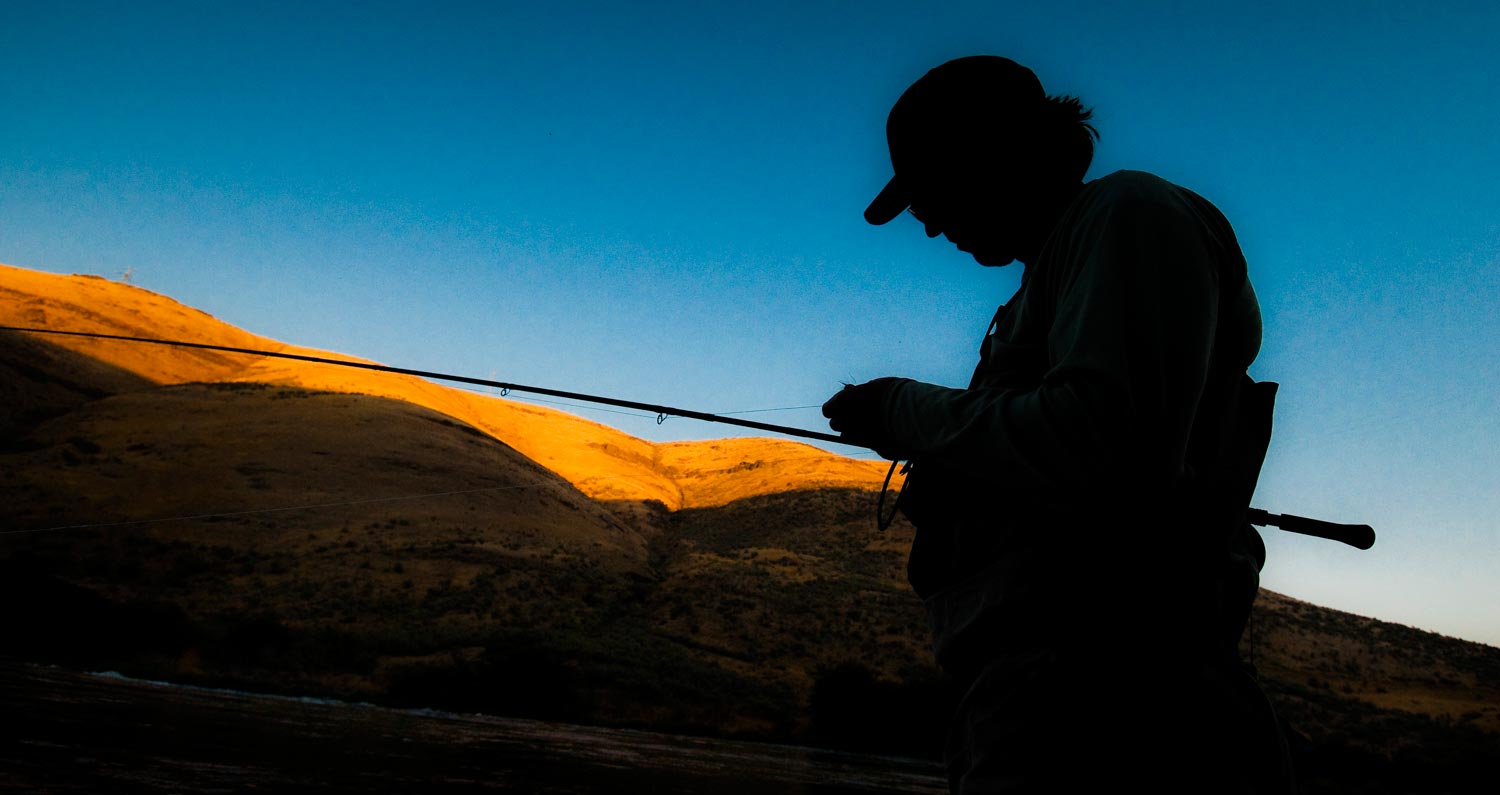
IT’S A COMMON MISCONCEPTION THAT “REAL PHOTOGRAPHERS” ONLY SHOOT IN MANUAL.
It’s not true. Certainly not for me. I grew up using manual cameras. Cameras that didn’t even have light meters. In fact I’ve spent as much time looking at the ground glass of a view camera as through the lens of a DSLR. I’m perfectly comfortable with it but I recognize that the automatic features of modern cameras offer benefits that can improve my work and I see nothing wrong with using them.
What “real photographers” do, is understand their exposure choices. How a photograph is exposed has an enormous impact on its emotional content as well as its clarity and color palette. The proper exposure for any given image is a highly subjective thing and possibly the most important choice the photographer has to make. Whether in manual or automatic mode, there are choices to be made and good choices are never made blindly. The key is in understanding what your camera sees and knowing how to control it.
UNDERSTANDING YOUR METER
The first issue is understanding how your light meter works. There are two components to this. First, how the light meter judges a scene and second, how that judgment is influenced by the meter mode selection. First we will look at what your meter sees.
No matter how advanced your light metering system, it is still a dumb machine. That holds true for use in manual mode as well as automatic. This is where novice photographers go wrong in switching to manual mode. The meter functions in exactly the same way and the user either understands that functionality, or they don’t.
To put it simply, the camera doesn’t know what it’s photographing. It is only able to judge tone. To some extent modern cameras know about highlight and shadow but what they really see is the middle of the tonal scale. A value that photographers call
Read More »Pack The Heat So You Can Pack it Out
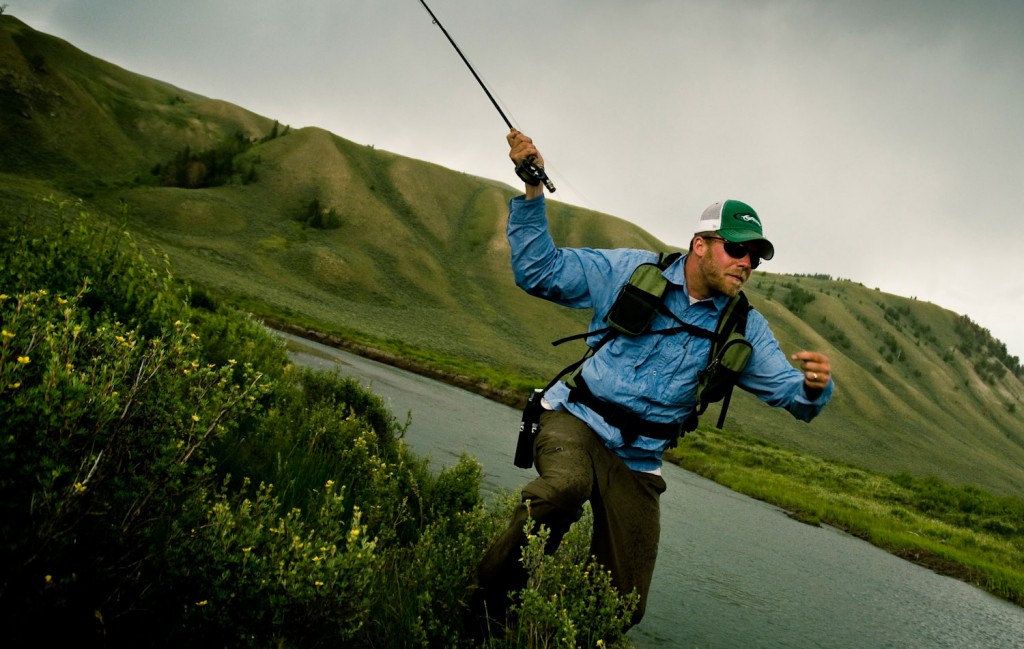
NO TREES HERE TO CLIMB AND I CAN BARELY SEE THE TRUCK WITH MY NAKED EYES FAR OFF IN THE DISTANCE.
The recent run-in with the local WYDNR officer, who just gave me the run down about heavy bear activity in the area, has got me the heebie-jeebies. I’m trying to let loose and be one with the rod, but I can’t stop from thinking I’m smelling wet dog in the air, and I’m terrified of what could be lurking behind the thick moose brush out of sight. If you’re in the process of planning a trip into the deep wilderness where bear, moose, and other dangerous predators thrive, you just might consider purchasing a canister of pepper spray, and keep it holstered on your side. Hell it could save your life.
Two years ago, I stumbled right on top of a Boon & Crockett moose bedded down during a short hike-in to a secluded stretch of the Snake River. Luckily, we both decided to flight in opposite directions, and I only had to change my britches before wetting a line. Guiding in Alaska one season, I somehow managed to stay under the radar, as two giant brown bears went toe to toe battling over a spawning bed within inches of my outpost tent. And I’ll never forget the feeling of total panic, when I walked up on a fresh bloody mule deer kill on the Upper Hoback River this past July. With my heart pounding out my chest, and the realization of no one knowing my whereabouts, I quickly said the hell with fishing, and high-tailed it back to the truck before I became desert.
We often drop a thousand dollars or more for our out of town fly fishing trips without giving it a second thought. That’s why I find it ironic, that when we get there, we gawk at the $50 price tag of a can of pepper spray. I’m not sure if it’s my life experiences that’s making me wiser, or if I’m just getting softer in my old age, but I’m damn sure of one thing. I’ve already used up all my get out of jail free-cards with
Read More »3 Counterintuitive things tenkara has shown me
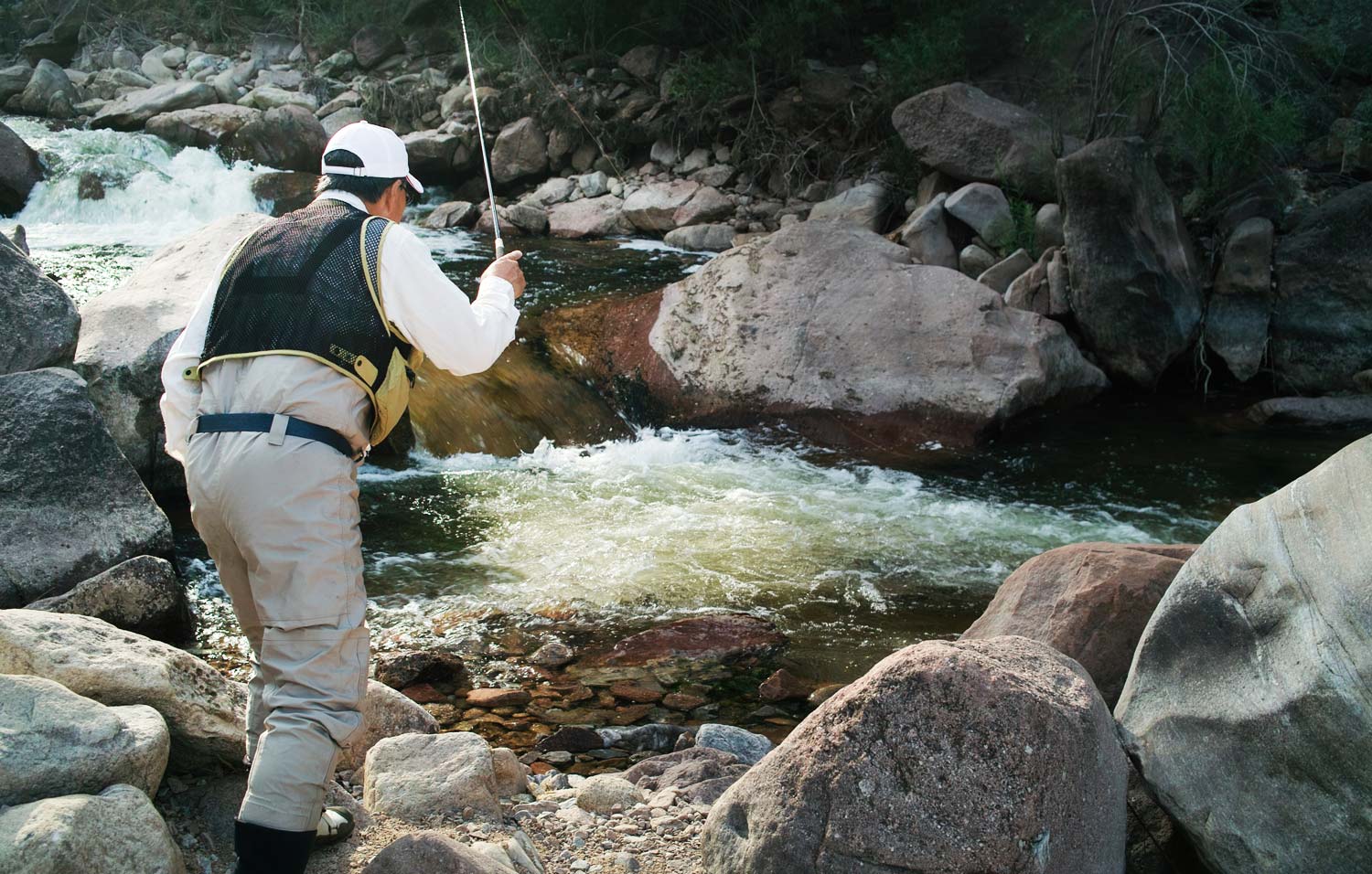
By Daniel Galhardo
Tenkara has taught and old dog some new tricks.
Since I started learning tenkara, it’s become obvious to me, that regardless of how intuitive the method is to the novice fly angler, some parts of tenkara are likely counterintuitive to the experienced fly angler.
HERE ARE A FEW THINGS ABOUT THAT ARE LIKELY COUNTERINTUITIVE ABOUT TENKARA TO THE EXPERIENCED FLY ANGLER:
A long rod is an asset in small streams
Small streams call for short rods. It makes sense right? Small mountain streams have always been my preferred playgrounds. Prior to my discovery of tenkara, my favorite rod was a soft action 7 ½ ft rod. It cast beautifully, I felt the force of the line loading it, and I felt I could maneuver it anywhere I wanted. But, that short rod probably contributed to my falling in love with tenkara. In streams we have this thing called drag. When line lays on the water, currents pick it up and drags the line downstream faster than the fly. Then, you have to mend. And, with that beautiful 7 ½ ft rod I had to mend…a lot. It was hard to achieve a good drift when fishing moving water. Like anyone else, I was absolutely intimidated by the idea of using a 12ft rod in those waters. That’s almost 5ft longer! That’s my whole wife’s worth of extra length. But, guess what, it worked. On my very first cast it was obvious that the dynamics caused by this new trigonometry had changed. I could fish pools on the other side of streams I liked without any mending. I certainly did not expect that. Nowadays you’ll find me using a 14ft 7inch long rod on my local Boulder Creek, a mountain stream that is about 25ft wide in most sections and a good amount of evergreens on its shores.
Let the rod bend!
It’s common knowledge: your fly rod is only designed to arc so much before it breaks, and to prevent breakages you should not have the rod pointed up with a deep bend on it. One is usually taught to keep a relatively low angle between the rod and the fish, lest it break. Yet, with tenkara there is no reel to allow a fish to take line. If your rod is at a low angle
Read More »Build Your Own Fly Rod: DIY Video 3
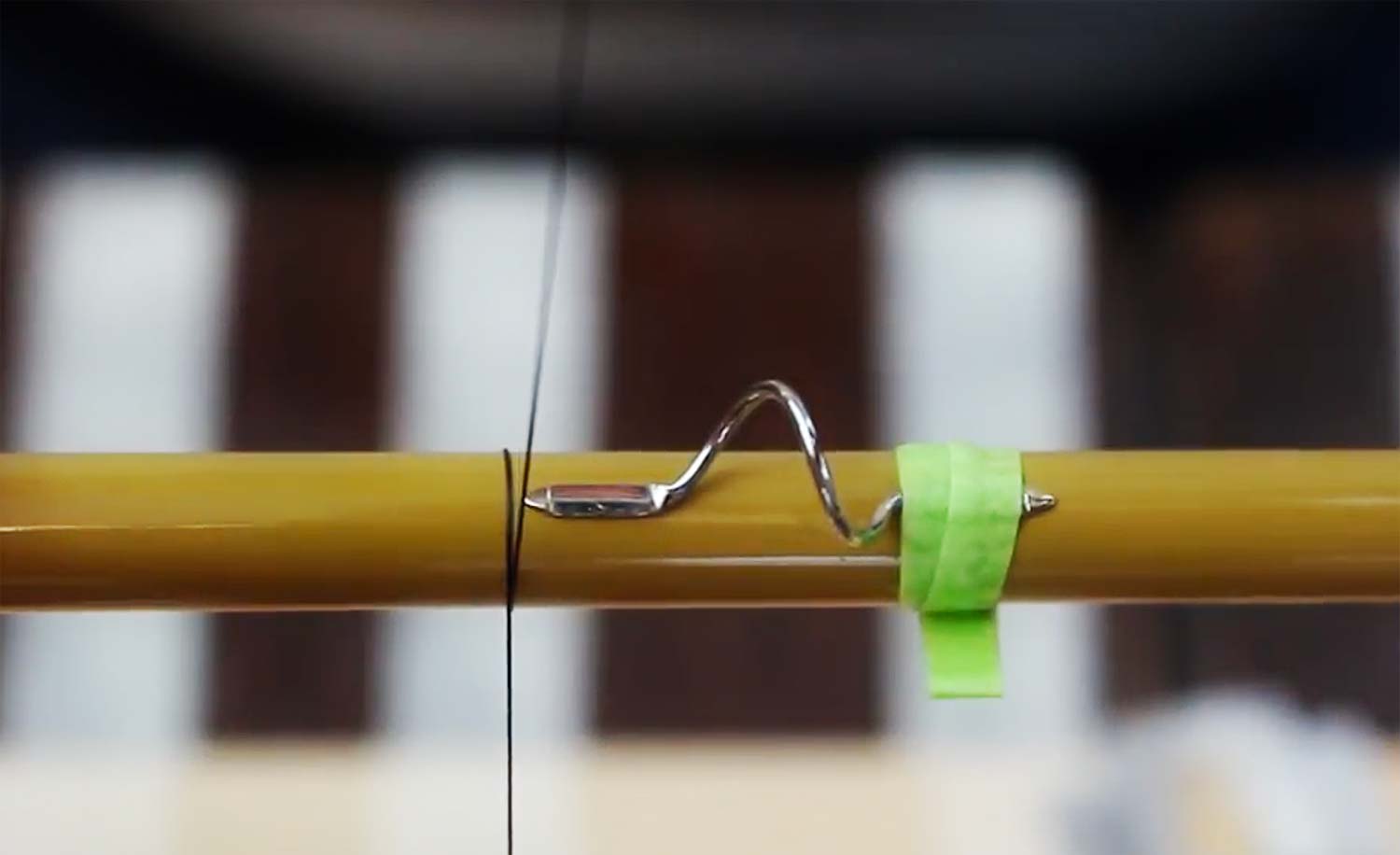
Things are heating up in our DIY fly rod build.
Matt Draft is back for the third video in our seven part series on building your own fly rod. In this video you’ll learn about tip tops, how to spline a rod blank, wrap your guides and get everything aligned. Our rod is starting to look like something by the end of this video!
Check out Matt’s site, Proof Fly Fishing. As a special thank you to G&G readers, Matt will be offering free shipping on all of his kits for the next seven weeks. Just use the code G&Gfreeship on his web site.
BUILD YOUR OWN FLY ROD: DIY VIDEO 3 TIP TOPS, ALIGNMENT AND WRAPPING GUIDES.
Read More »My Favorite Strike Indicator: Video
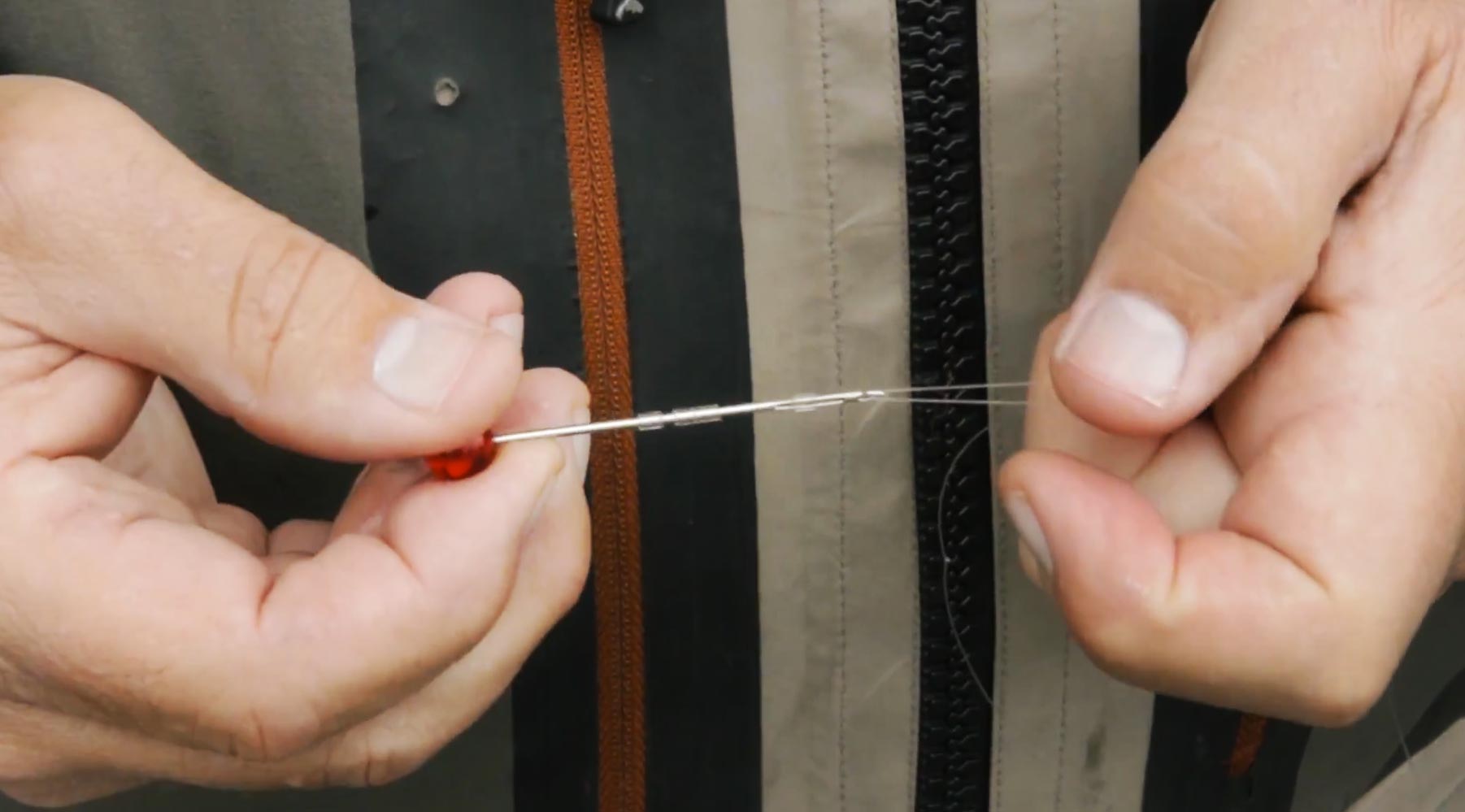
I don’t always fish an indicator, but when I do…
It’s the New Zealand Strike indicator. I love these little wool indicators. They are the best I’ve ever used. They’re super sensitive, easy to use and they don’t kink up your leader. The thing I love the most about them is they give you a more natural drift than a bobber. You can even let them sink in deep runs and still see the strike. Sinking your indicator gives you the most natural drift you can get with an indicator.
In case you’re wondering, I don’t get any kind of sponsorship from the company. This sounds like a plug, even to me, but this is just a tool I love and I think you’ll love it too.
WATCH THIS VIDEO AND LEARN HOW TO USE THE NEW ZEALAND INDICATOR.
Read More »Fish Floating Nymphs for Selective Trout
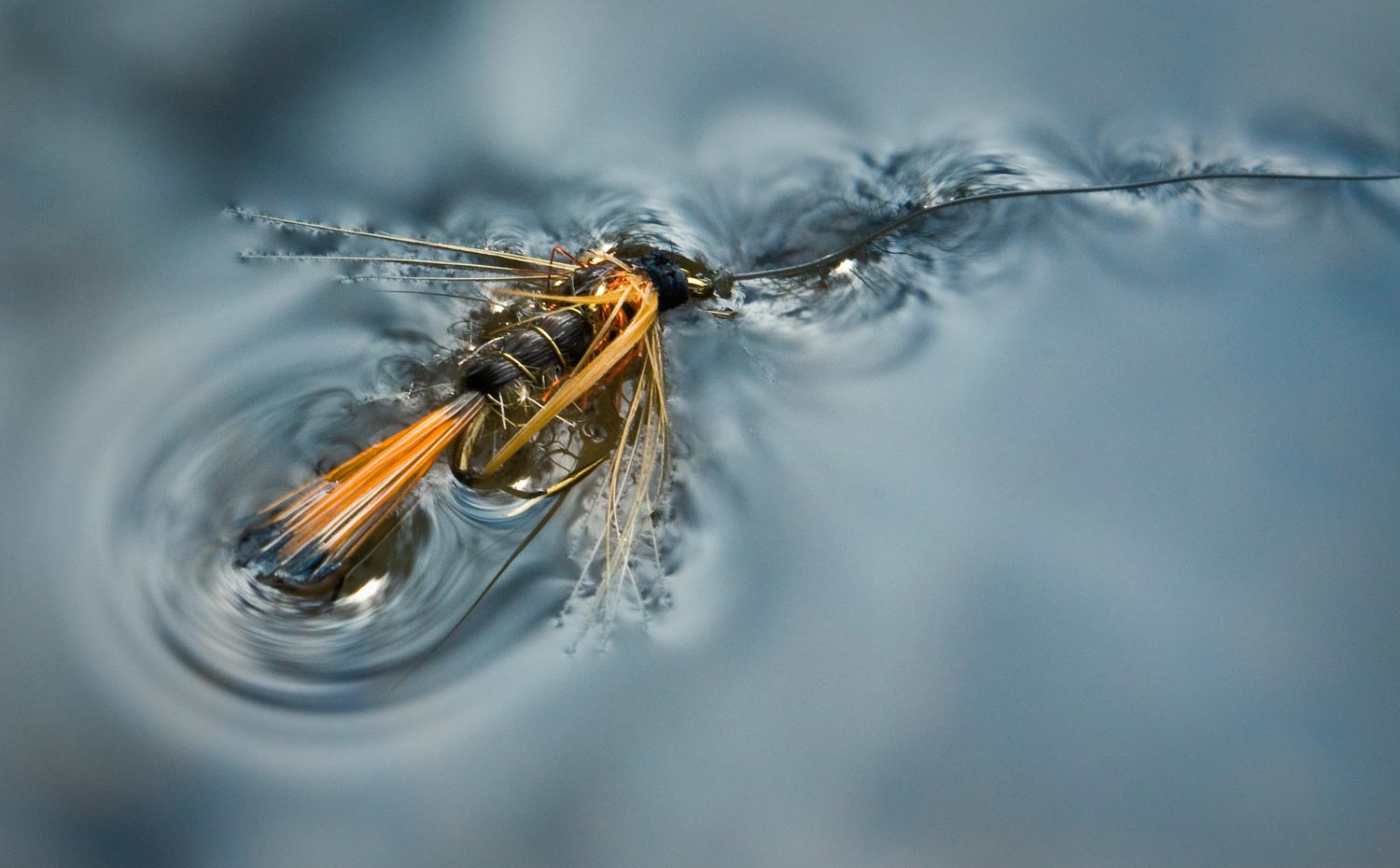
TELL ME IF THIS SOUNDS FAMILIAR.
You’re kneeling at the edge of a slow glassy pool watching several big trout inspect what floats above them. You change flies, again, and make yet another perfect presentation, only to watch the fish move three feet out of the way as your fly passes by.
It’s a common scene on heavily pressured, catch-and-release trout streams. Big educated fish who have seen a lot of flies don’t come to hand easily. Kent and I were in exactly this scenario just the other day and were able to turn it around using a simple but often overlooked technique. A floating nymph.
Fish see dry flies in a very different way than we see them. Before the fish inspects your thread color or how many turns of hackle you’ve used it sees the impression of the fly on the water. These slight dimples in the surface film are incredibly powerful triggers for feeding fish. The curved surface of the water, which supports the fly, focuses the light creating a bright spot that get the fish’s attention like a flashing light. This is why fish commonly eat Thingamabobbers.
Fish who live under constant pressure from anglers become very savvy at reading these impressions on the surface film. They eat only those items that make subtle, life-like impressions. The kind of impressions made by emerging insects struggling in the film. Nothing I know of is a better imitation than a floating nymph.
Start with the right nymph. It must be unweighted. A nymph tied with
Read More »Dean River Chinook
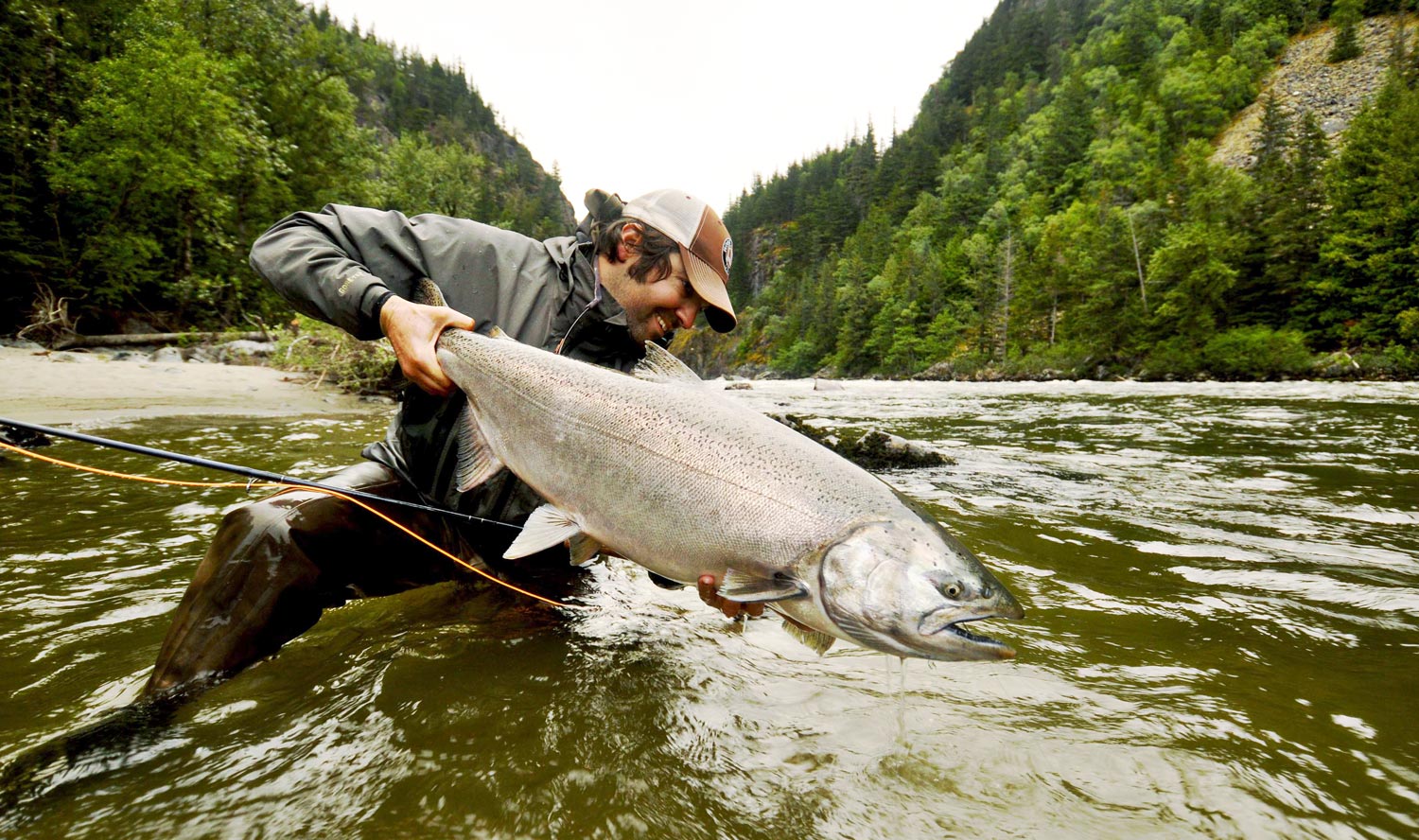
By Jeff Hickman
IT’S TIME FOR THE BIG BOYS.
With the rapidly increasing popularity of Spey fishing, targeting Chinook salmon has also recently become hot. These large powerful anadromous fish have always been attractive to fly fishers in areas with strong populations. But with modern spey rods and Skagit heads they have become much more accessible to fly anglers. The old myth that they don’t eat flies is far from the truth! These Kings of the river are as good as freshwater gamefish fish get. When they are fresh-from-the-salt and in the mood, they will attack flies every bit as aggressively as steelhead do!
I had heard the old timers’ stories of the good ol’ days when the Chinook were thick in west coast rivers and fly anglers could catch as many as they wanted. While at times we do still have some good Chinook fishing in Oregon, I wanted a full immersion to experience them. So years ago I got a job guiding fly fishing on the Kanektok River for Alaska West and I headed north to cut my teeth on Chinook fishing. I had heard in western Alaska, Chinook were plentiful and they were like Winter steelhead on steroids. It was true and it was there that I fell in love with these leviathans. I spent nine seasons on the Kanektok guiding and swinging flies for Chinook and I learned a lot about them in the process.
The recent scuttlebutt among Chinook anglers is over the emergency Chinook fishing closures in the last two years in Western Alaska. In western Alaska, King salmon stocks are experiencing a period of low productivity. Run forecasts have been too low for ADF&G to allow any commercial or sport Chinook fisheries in the entire Kuskokwim River drainage including all Kuskokwim Bay tributaries. Among the closures again this year are the Kanektok and Goodnews Rivers. Both are legendary rivers for having robust healthy runs of these amazing fish. This is very tough news for everybody that has a connection to this area and these fish. I hope that these robust runs are able to recover quickly to the sustainable fishable levels of the past.
But Alaska isn’t the only destination to catch Chinook on the fly consistently. I now spend the early part of my Summers chasing Chinook in British Columbia. When the two words
Read More »Make White Trim Wraps Like Magic
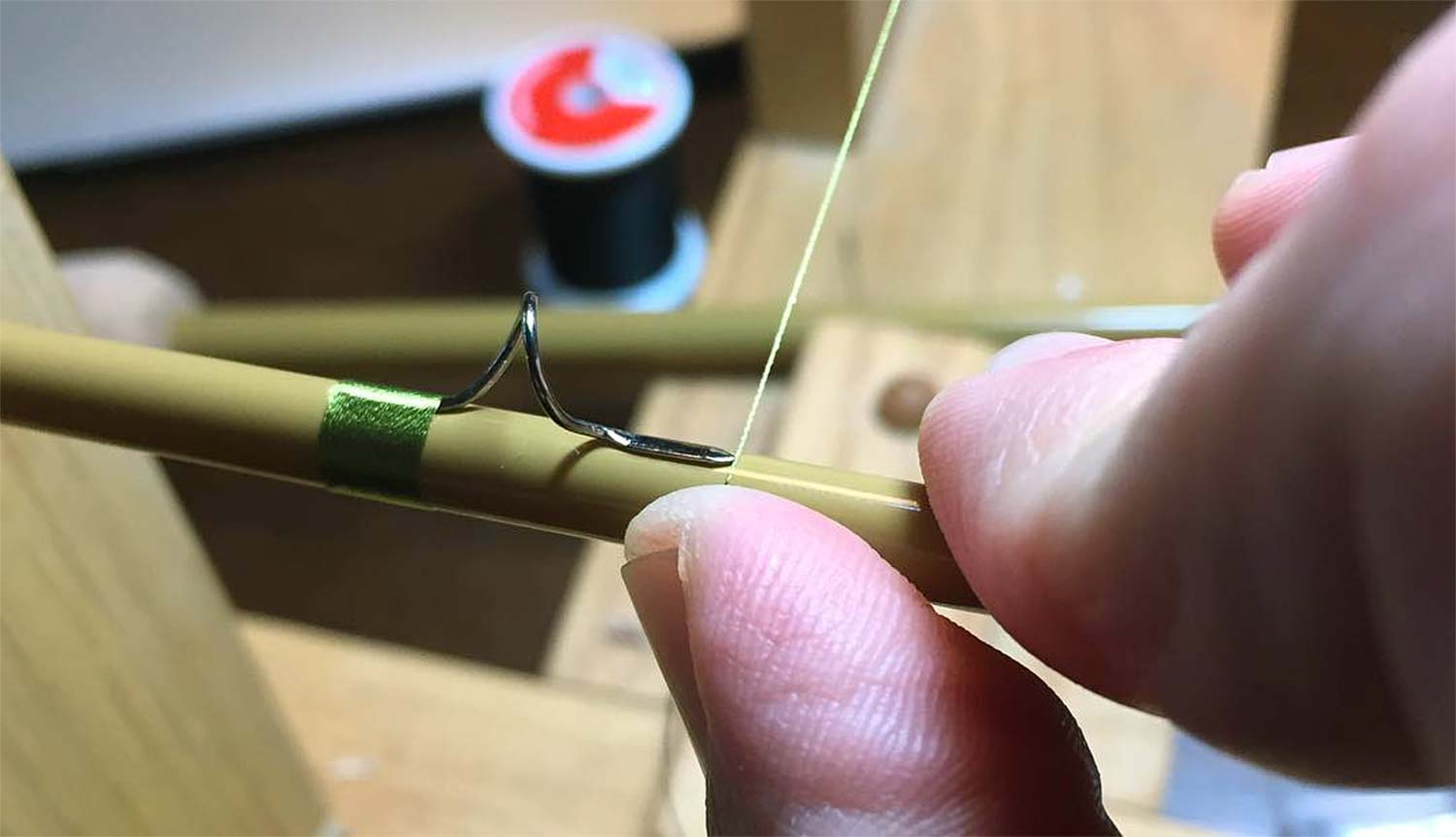
Matt Draft’s white trim wraps are one of the coolest fly rod building tricks I’ve ever seen. Making white trim wraps in traditional silk thread is a little like catching a unicorn. Doing it at all is a good trick, but making it as easy as Matt Draft, of Proof Fly Fishing, does is just brilliant. These trim wraps are super easy and really sharp looking. Watch the video and learn to make white trim wraps on your next rod build. Louis Cahill Gink & Gasoline www.ginkandgasoline.com hookups@ginkandgasoline.com Sign Up For Our Weekly Newsletter!
Read More »Seeing the Fish: Tips on how to focus and see more fish
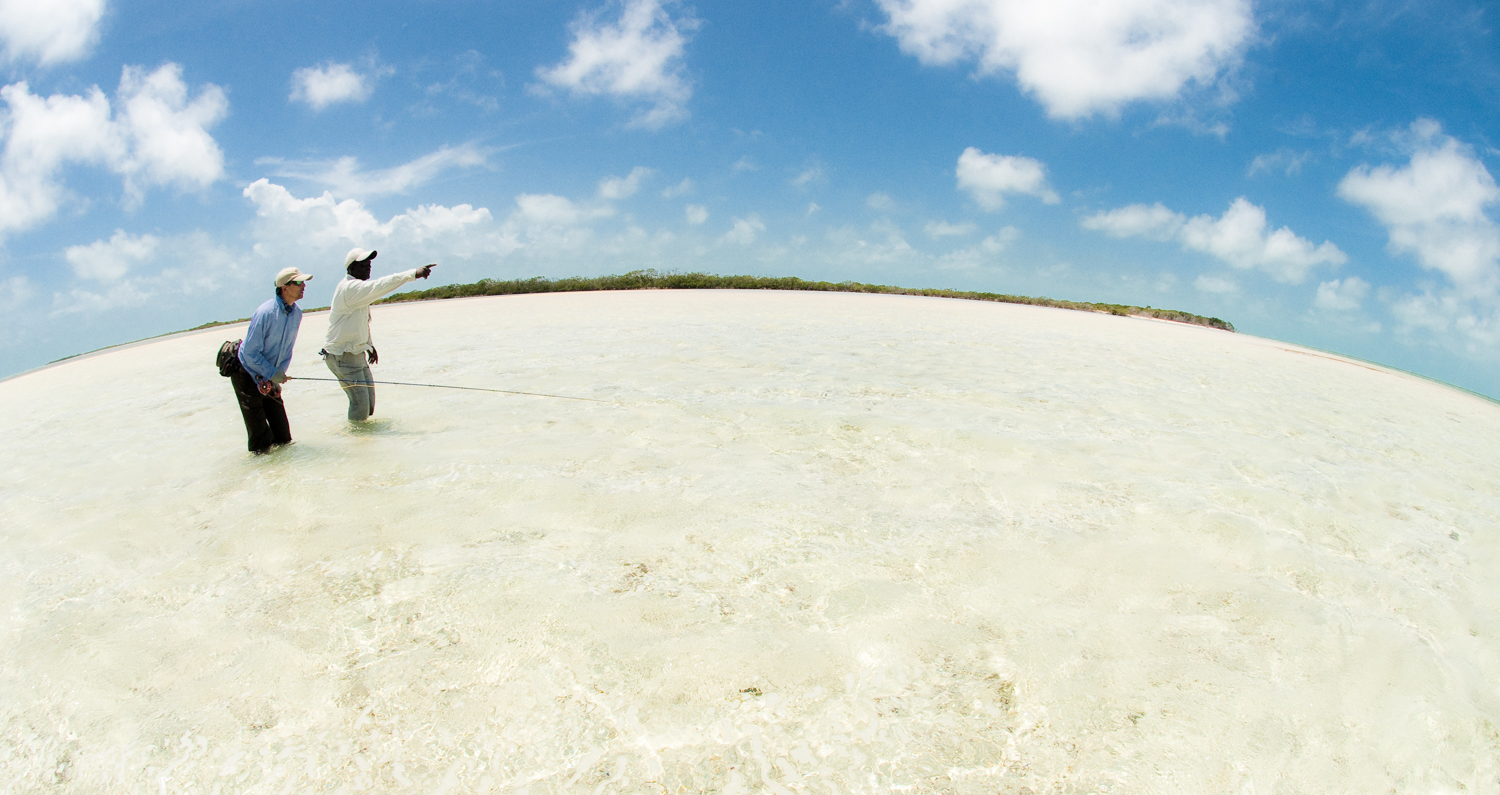
By Owen Plair
Sight fishing is by far the most exciting and exhilarating way to target fish with a fly.
Whether you’re combing the flats looking for cruising bonefish or walking a river looking for that big Brown sipping on the surface, sight fishing brings out that true primal instinct in both fresh, and saltwater anglers. The feeling of watching a fish feed in its natural environment, presenting a fly in that environment and watching the fish make that gorgeous mistake of eating it, is simply amazing. Fly fishing is fly fishing no matter how you catch a fish but when sight fishing, there are a lot of things that have to come together just right. Seeing the fish is the very first piece of the puzzle and the most important.
As a saltwater guide, the most important part of my job is finding the fish and then being able to get my angler to see them. Looking for fish is fun and one of my favorite things about guiding, but it’s not always easy. There are so many variables. Obviously the most aggravating and unpredictable variable is mother nature. Sometimes I wish I could take mother nature out to dinner a few times a week just so she would always be nice. The other main problem is the angler not being able to see the fish. If you don’t see the fish, then the difficulty of catching that fish is raised 10 times. This article is a brief summary of how to open your eyes to your surrounding, not just using sight but all of your natural instincts to find that fish and present a fly.
When I go on a trip to a new fishery, I always ask my guide or friend, “What are we looking for?” Two sets of eyes on the boat are always better than one, even the guy sitting on the cooler drinking a beer should ask what to look for. I find that one of my favorite feelings is when I step on the bow, strip out my line, and start studying the water. It allows you to be ready and most of all aware what’s around you. Even certain sounds like a tarpon rolling or a fish busting bait can tell you what direction to look.
We have all had moments when we don’t see a fish and all hell breaks loose trying to find what the guide is looking at. The bow clock was created for sight fishing and is one of the most important tools for understanding where to look. Talk with your guide or friend and point your rod from 9 o’clock to 3 o’clock so that you both are on the same time zone. The bow is 12 o’clock and always 12 o’clock, no matter what direction I’m spinning the boat. Always look directly at the nose of the boat to find 12 and adjust from there.
Getting an idea of distance is very important. Knowing when to look 40 feet at 11 o’clock or 80 feet at 11 o’clock can be crucial. Most fly lines now have
Read More »11 Tips for Spotting Tarpon
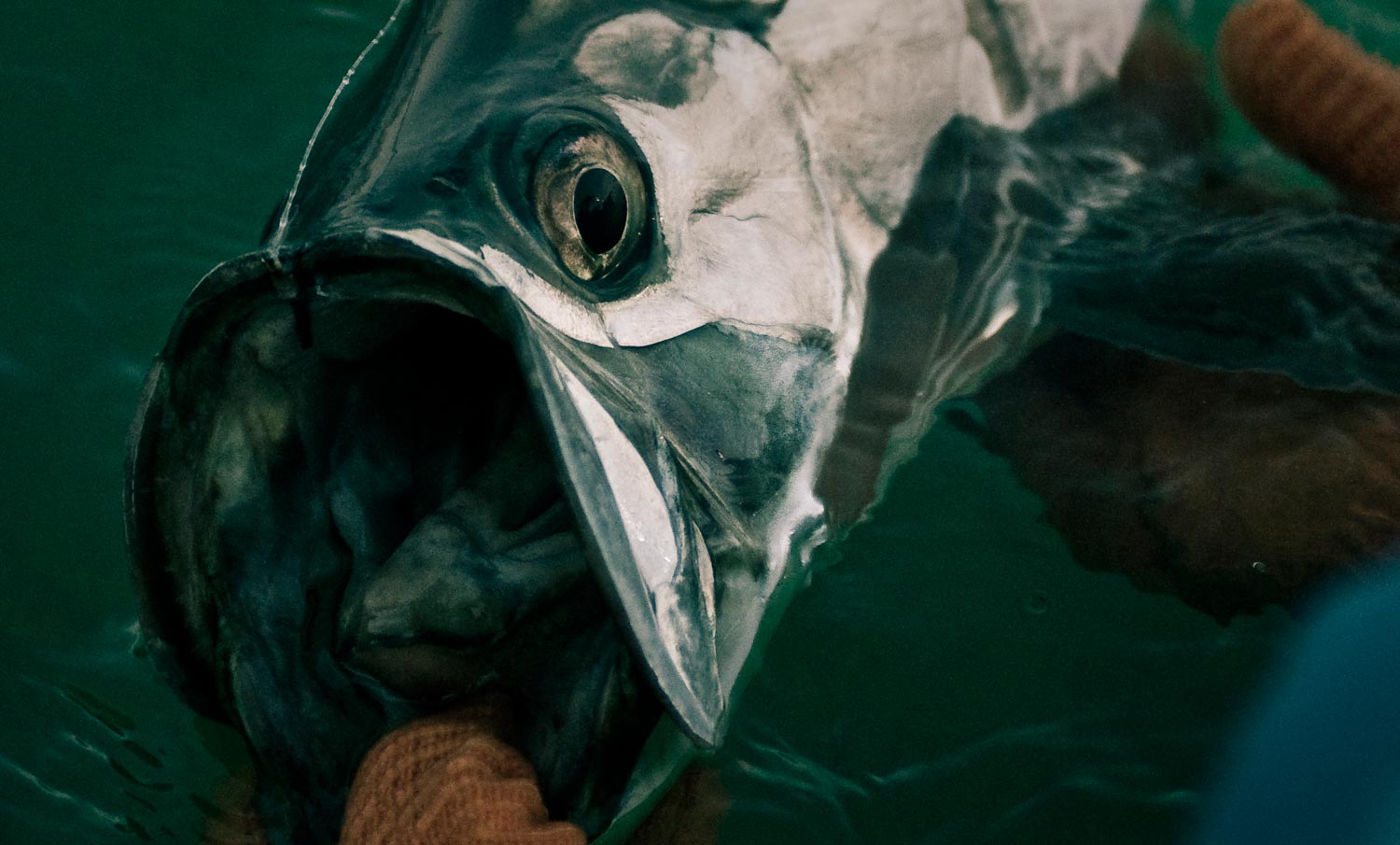
HOW DOES A SIX FOOT LONG FISH VANISH?
It’s hard to imagine, but they do. Even big schools of tarpon can sneak up on you with surprising regularity. Tarpon fishing is a game of strategy and the earlier you see the fish, the better your chances of success. Having the time to set up a good angle and make a plan are key. It’s also important to read the fish’s attitude and in the best case see the eat. Good eyes are as important as the right fly.
Like any flats fishing, good polarized glasses are a must and your guide will be a valuable resource. Even with the help of a guide, knowing what to look for and what it means when you see it will make the difference between frustration and elation. Here are some tips to help you succeed.
Know what to expect
Tarpon shots come in a variety of favors. Tarpon can be laid up, sitting still alone or in pairs. They can be in schools, from three or four fish to three or four hundred. Those schools can be milling around on a flat or on the move. They can move as a big group or a single file procession. These processions sometimes swim in a perfect circle called a daisy chain. Knowing what each of these options looks like will help you quickly identify the fish’s behavior and plan your presentation.
Scan the water
It’s easy to get tunnel vision when you’re on the bow of a flats boat. Fixating on a suspicious shadow or looking where you expect to see fish can blind you to approaching fish. Keep your head on a swivel and scan the water from side to side and near to far. Spend a little extra time studying water where visibility is poor. Fish can literally come from anywhere so don’t get caught staring a hole in the water.
Motion
The easiest fish to see are the ones on the move. The human eye picks up motion quickly and if you are scanning properly you will pick up moving fish from a good distance. Just be aware that you could be looking for a single fish, a line of fish or a big school. A school of several hundred tarpon looks like the shadow of a cloud moving on the water. Make sure you know which direction the clouds are moving.
Color
Like bonefish, tarpon have highly reflective sides which offer nearly perfect camouflage. What gives them away is
